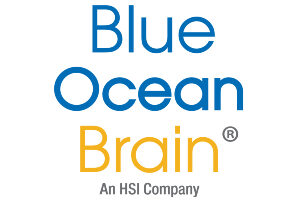Diversity and inclusion have become buzzwords across organizational spaces, and it encompasses more than race and ethnicity. People love to talk about diversity of thought, and the concept of neurodiversity is starting to take shape in many organizations. As learning and development (L&D) folks, we’d better take notice, because as organizations become more inclusive, we need to shift our focus, too.
What Is Neurodiversity?
The best definition of neurodiversity comes from John Elder Robison, who has Asperger’s syndrome (a form of autism spectrum disorder) and is the co-chair of the neurodiversity workgroup at William and Mary College. In his 2013 blog post on Psychology Today, he writes: “Neurodiversity is the idea that neurological differences like autism and ADHD are the result of normal, natural variation in the human genome.” He says that the focus should be on accommodation, not a cure.
According to The Autistic Self Advocacy Network, neurodiversity is a term that broadly covers “neurocognitive differences such as autism, attention deficit hyperactivity disorder (ADHD), dyslexia, Tourette’s syndrome, anxiety, obsessive-compulsive disorder, depression, intellectual disability, and schizophrenia, as well as ‘normal’ neurocognitive functioning, or neurotypicality.” Unfortunately, because neurodiversity is invisible, it is often unrecognized and highly stigmatized. Chances are, you have people in your own circle who are neurodiverse.
The Benefits of Neurodiversity
More and more, businesses like JP Morgan Chase, IBM, Microsoft, Goldman Sachs, SAP and Chase are starting to take notice and appreciate the value that neurodiversity brings to an organization. Benefits include higher levels of focused talent and better innovation. In 2018, James Mahoney, then the head of JP Morgan’s Autism at Work program, told Fortune Magazine, “Our autistic employees achieve, on average, 48% to 140% more work than their typical colleagues, depending on the roles.”
The more we can create space for people to think differently, the better organizations we will have. While neurodiverse people think, process and/or act differently than neurotypicals, appreciating the strengths they bring to teams makes a difference. Appreciating and accommodating the behaviors and social norms of people who are not like us is the heart of inclusion. Examples of such accommodations include providing sound-canceling headphones to prevent overstimulation, having sensory objects available or creating quiet spaces within office design.
Making an organization more inclusive for neurodiverse individuals requires an appreciation of each person within his or her work context and a focus on getting to know employees individually and leading people on a situational basis. In L&D, we have always known the importance of these behaviors, and we will come to appreciate neurodiversity as much as we appreciate employees’ diverse learning preferences. But unless we truly understand what it means, we may miss it.
Making Training More Inclusive
Trainers often do not know that someone is neurodiverse unless he or she tells them. Many large organizations work with agencies that help with selection, onboarding and training — but what can we do if we don’t know about the neurodiverse learners in our classrooms? How can we ensure that our learning and development programs are inclusive for all learners?
1. Ask Learners to Name Their Learning and Communication Preferences on Day 1
This step will create heightened awareness for the trainer and give the class a look into their own makeup. It will also help everyone to understand each other and their similarities and differences from the beginning.
- Create Soft Skills Modules That Address Business Norms
This type of training is great for general business norms, but also consider what is unique in your organization. Be explicit in soft skills instruction, and consider a module on recognizing behaviors and the meanings behind them.
3. Offer Alternative or Extended Assessment Processes if Needed
Hopefully, your assessment process measures behavior, not just knowledge. Pay attention to the person who can display the right behavior but struggles with test questions, and review your assessments for potential bias.
4. Provide Coaching Support During the Learning Process
This support can come in the form of a coach, a buddy or a mentor. The feedback should be real and based on the experiential component of the learning process.
5. Create a Plan for Career Pathing Development
It’s great if you have a development plan for your learners, but if you do not take the time to share their path to success with them, it does not matter. This is often especially true for neurodiverse learners.
6. Create a Safe Space for Individuals to Self-identify Their Needs
Make sure learners feel safe to disclose disability and their specific needs.
7. Remember That Communication Matters
Use direct rather than nuanced messages, and give clear feedback with a regular cadence. Be sure that you tell your learners what they are doing well, what they should continue to do and what they should do differently.
I’ll leave you with one of my favorite classroom questions: Describe how this organization can support you in doing your best work during this course and in the future. If you take away any amazing nuggets of information, don’t forget to share them.
If you have more tips, I’d love to hear them! Tweet me @Loren_Sanders.




